
Bride of the Fat White Vampire
A Novel
A Novel
By Andrew Fox
By Andrew Fox
By Andrew Fox
By Andrew Fox
Part of Fat White Vampire
Part of Fat White Vampire
Category: Gothic & Horror | Contemporary Fantasy
Category: Gothic & Horror | Contemporary Fantasy
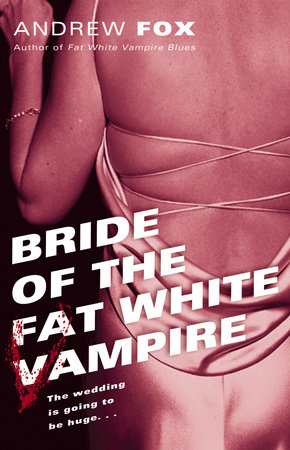
Buy from Other Retailers:

Buy from Other Retailers:
-
$19.00
Aug 03, 2004 | ISBN 9780345464088
Buy from Other Retailers:
-
Aug 03, 2004 | ISBN 9780345478610
Buy from Other Retailers:
About Bride of the Fat White Vampire
After morphing into 187 very large white rats in the name of self-preservation, Jules Duchon is back to his portly self, a member of that secret class of New Orleans citizens known as the undead. Though he would like nothing better than to spend his nights raising hell and biting flesh in his beloved French Quarter, duty calls when an exclusive club of blue blood vampires demands that the 450-pound cabbie find out who is attacking its young and beautiful members. Adding insult to injury, he has to enlist the help of a former foe: a black vampire named Preston.
What’s a vampire to do? Without the love of a woman to ease his pain, Jules isn’t convinced that his undead life is worth living. He doesn’t desire Doodlebug (she may be a woman now but Jules knew her back when she was just a boy) any more than he longs for Daphne, a rat catcher who nourishes a crush the size of Jules. No, only Maureen will do. Once a beautiful stripper with nothing but curve after curve to her bodacious body, now she is mere dust in a jar. But Jules will move heaven and earth to get her back . . . even if it means pulling her back from the dead.
About Bride of the Fat White Vampire
After morphing into 187 very large white rats in the name of self-preservation, Jules Duchon is back to his portly self, a member of that secret class of New Orleans citizens known as the undead. Though he would like nothing better than to spend his nights raising hell and biting flesh in his beloved French Quarter, duty calls when an exclusive club of blue blood vampires demands that the 450-pound cabbie find out who is attacking its young and beautiful members. Adding insult to injury, he has to enlist the help of a former foe: a black vampire named Preston.
What’s a vampire to do? Without the love of a woman to ease his pain, Jules isn’t convinced that his undead life is worth living. He doesn’t desire Doodlebug (she may be a woman now but Jules knew her back when she was just a boy) any more than he longs for Daphne, a rat catcher who nourishes a crush the size of Jules. No, only Maureen will do. Once a beautiful stripper with nothing but curve after curve to her bodacious body, now she is mere dust in a jar. But Jules will move heaven and earth to get her back . . . even if it means pulling her back from the dead.
About Andrew Fox
Andrew Jay Fox is the author of Fat White Vampire Blues and Bride of the Fat White Vampire. He was born in 1964 and grew up in North Miami Beach, Florida. The first movie he remembers seeing is Japanese monster fest… More about Andrew Fox
About Andrew Fox
Andrew Jay Fox is the author of Fat White Vampire Blues and Bride of the Fat White Vampire. He was born in 1964 and grew up in North Miami Beach, Florida. The first movie he remembers seeing is Japanese monster fest… More about Andrew Fox
Product Details
Category: Gothic & Horror | Contemporary Fantasy
Paperback | $19.00Published by Ballantine Books
Aug 03, 2004 | 448 Pages | 5-1/2 x 8-1/4 | ISBN 9780345464088
Category: Gothic & Horror | Contemporary Fantasy
Ebook | $12.99Published by Ballantine Books
Aug 03, 2004 | 448 Pages | ISBN 9780345478610
YOU MAY ALSO LIKE

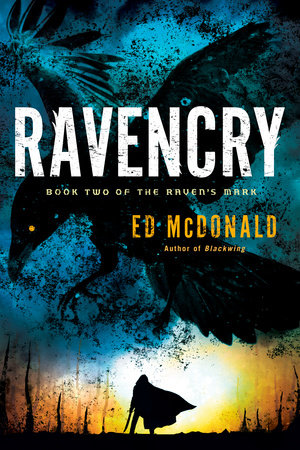
Ravencry

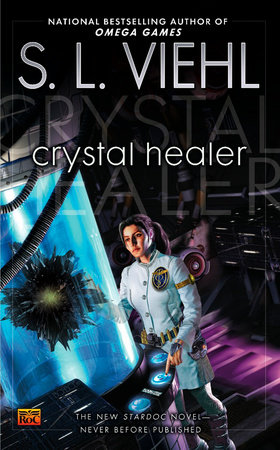
Crystal Healer

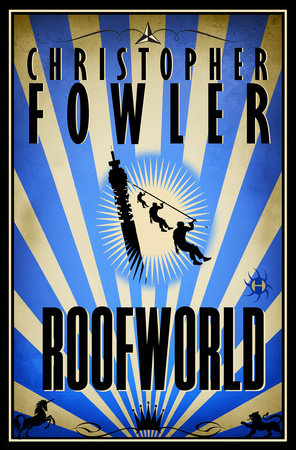
Roofworld

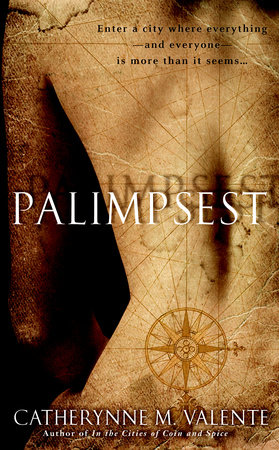
Palimpsest

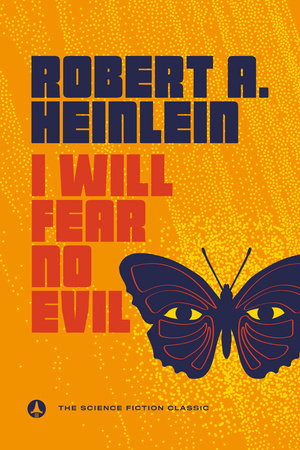
I Will Fear No Evil

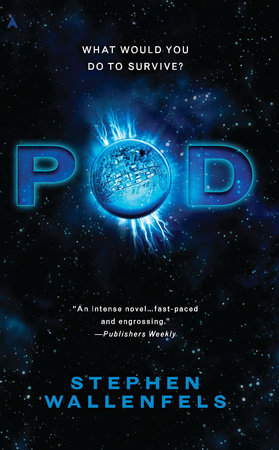
Pod

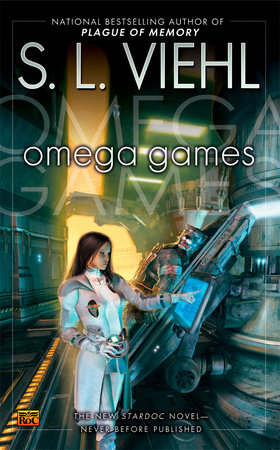
Omega Games

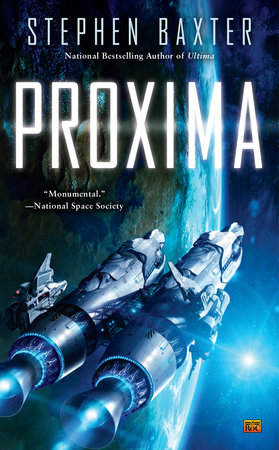
Proxima

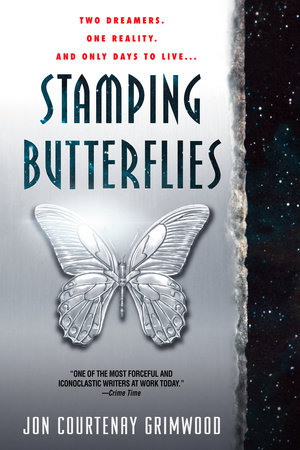
Stamping Butterflies

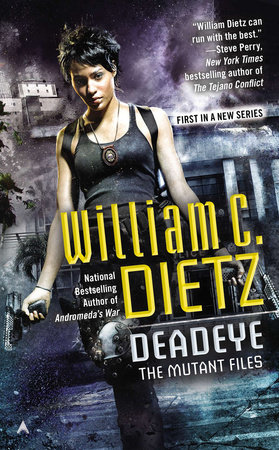
Deadeye
Author Q&A
A conversatipn with Andrew Fox author of Bride of the Fat White Vampire
Del Rey:Okay, let’s get the inevitable Anne Rice questions out of the way! Your books are obviously influenced by her; she even appears–under another name and not entirely flatteringly–as a minor character . . . who happens to live in New Orleans and write vampire novels. Why did you decide to write her into your work in this way? Is there any, so to speak, bad blood between you?
Andrew Fox:I’ve never had the pleasure of meeting Anne personally, although I once explored her home on First Street in New Orleans with a Christmas tour of Garden District mansions. Plus, I did a mime and improv show in college at St. Elizabeth’s Girls’ Home for the residents there, but that was years before Anne purchased the building (which she’s now sold; the place is being split up into luxury condos). However, even though I’ve never met her face to face, I feel like I KNOW Anne–having lived in New Orleans continuously since 1990, she has been a part of my environment, the buzz and background noise and talk-radio chatter that is all but unavoidable here. In the mid-1990s, when New Orleans had reached a nadir in terms of crime and police corruption and everyone I knew was thinking about moving to Colorado, Anne was involved in a series of real estate controversies that provided lots of much-needed comic relief for the city. The very best one was her pissing match with the founder of Popeye’s Fried Chicken, local hero Al Copeland, who is just as bigger-than-life as Anne herself. Al planned to buy a closed Mercedes Benz dealership on St. Charles Avenue and turn it into a neon-encrusted bistro called Straya’s. Anne had a sentimental attachment to this building, having featured it in one of her vampire books, and, more importantly, the idea of grand St. Charles Avenue being defaced by a nouveau-riche yat’s idea of a pleasure palace made her see red. So she rallied opposition to Al’s building plans in city government, and the two of them took turns blasting each other with full-page ads in the Sunday Times-Picayune during Carnival season. Their feud didn’t end until Al served Anne with a defamation lawsuit, which got thrown out of court, and he then noticed that all the controversy had significantly improved attendance at Straya’s (now called Cheesecake Bistro). I remember sitting in a breakfast joint during Carnival season with some friendly strangers and marveling at these gigantic, expensive broadsides in the newspaper, Al and Anne just pummeling each other, and commenting to my neighbors, “Ahh, a gift from the gods to us little people.” We really needed the distraction from all the terrible local news in the papers that season. Much of the plot of Bride of the Fat White Vampire revolves around real estate redevelopment shenanigans, and I tried to capture much of the flavor of the “Anne versus Al” war in the book.
Our paths crossed in other, more intimate ways. I’ve lived in several homes very close to one or more of Anne’s properties, and I was around when she made her infamous trip down Prytania Street inside a pine coffin in a mule-drawn hearse to a book signing at Garden District Bookshop (what a great publicity stunt . . . gotta remember that one!). One of my good friends, a musician and songwriter, got blackballed in the local charity scene after he penned a satirical song about Anne and her husband Stan that got played on WWOZ public radio. Plus, back in 1997 I dated a gal whose landlady went to the same beauty parlor as Anne did, so I received regular gossipy updates whenever the landlady shared a hair-styling day with Anne. In fact, it was gossip about Anne’s late-1990s problems with her weight (since addressed by a stomach-reduction surgery) that provided the creative spark which led to Fat White Vampire Blues.
On a purely literary level, I think it would be both dishonest and nearly impossible to write a satire focusing on vampires and the vampire craze in New Orleans without featuring, or at least alluding to, a local horror novelist much like Anne Rice. She’s too big a part of New Orleans culture, particularly New Orleans horror and literary culture, to avoid including in a portrait of the city. It would be like writing about the French Quarter and forgetting Jackson Square . . . or writing about the Mississippi and never mentioning mud.
Come back to New Orleans, Anne Rice! We miss you! All is forgiven!!!
DR:Your first novel, Fat White Vampire Blues, was also compared to John Kennedy Toole’s classic black comedy, A Confederacy of Dunces–especially its overweight and overwrought hero, Ignatius O’Reilly. Was Ignatius the inspiration for your hefty vampire hero, Jules Duchon?
AF:Just as one can’t write a satire on vampirism in New Orleans without referencing Anne Rice and her influence, one really can’t set out to write a sprawling, slapstick, comic picturesque set in New Orleans without confronting the gargantuan shadow of Ignatius O’Reilly. Ignatius has become part of New Orleans’s DNA, almost as much as Louis Armstrong has. Confederacy has been one of my favorite books for years–I don’t think any American novel has ever deployed better comic dialogue–so when the notion occurred to me to write a book about the trials and tribulations of an obese vampire in New Orleans, naturally my thoughts turned to the original Oliver Hardy of New Orleans literature. I didn’t want to make Jules a “vampire Ignatius”–not only wasn’t that my vision of Jules’s personality, but to try to do so and do John Kennedy Toole’s creation justice was, I felt, beyond my reach. What I did want to evoke was the spirit of Toole’s novel and Toole’s New Orleans . . . that peculiar combination of self-centeredness, inflated self-regard, and a nagging sense of inferiority and failure that Toole portrayed as being emblematic of New Orleans (a portrayal which I think hits close to the bull’s-eye). The typical New Orleans native (if there is such as thing) will spend hours listing the horrendous failings of his hometown, but he wouldn’t live anywhere else. And if anyone from the outside dares to deride New Orleans in comparison with, say, Houston, that same New Orleanian who was previously so down on his home will spring fiercely to the Big Easy’s defense with the passion of Arthur protecting Camelot.
Admittedly, Jules and Ignatius share numerous personality traits: slothfulness; a reverence for home and all things connected with home; devotion to traditional religion; living in their mothers’ homes and shadows; and, above all, a bullheaded assurance that their way is the right way. But Ignatius has a vocabulary, education, and, most likely, an I.Q. far beyond Jules’s, and if they ever met, he’d probably consider Jules the sort of uncouth, ignorant lout Ignatius’s mother would enjoy having a beer with. Jules, on the other hand, would deride Ignatius as a pointy-headed intellectual, almost as stuck up as the aristocratic vampires of the High Krewe of Vlad Tepes . . . but he would certainly consider Ignatius a tempting meal.
DR:What else has influenced your portrayal of vampires?
AF:My earliest exposure to vampires was all movie vampires–on TV, late-night showings of the old Universal horror flicks, particularly the ones starring John Carradine as Dracula, and at the drive-in, a double-feature of Scream, Blacula, Scream! and The Return of Count Yorga made a huge early impression. Also highly influential in my early vampire education was a subscription to Marv Wolfman and Gene Colan’s fantastic Tomb of Dracula Marvel Comics series (now, happily, available again as Marvel Essential reprints).
Jules has very little in common, character-wise, with the majority of literary vampires or with Bela Lugosi’s or Christopher Lee’s Draculas; they’re all much too well put together and self-assured. Jules’s primary predecessor in films would be Lon Chaney, Jr.’s Count Alucard–pudgy in the face, not too smooth or suave, embarrassed by his corny dialogue, looking like he wants to be anywhere but in this god-awful movie. That little nebbishy Jewish vampire in The Fearless Vampire Killers, him Jules could probably claim as a relative. Maybe if Leslie Neilson’s vampire had had a tragic, melancholy side to him, he could be considered a precursor, too.
DR:What makes New Orleans the vampire capital of the world?
AF:Two words–ANNE RICE!!!
Seriously, though, how many cities in North America can claim the same combination of long history, exotic culture, historic architecture, and connections to the supernatural as New Orleans? The only strong rival candidate would be San Francisco, with New York, Boston, Quebec City, Mexico City, and maybe Santa Fe as runner-up possibilities. New Orleans claims in its favor its powerful connections to Spain, France, Haiti and the Caribbean (and thus its voodoo roots), its unique cuisine, its status as the home city of jazz, its many distinct neighborhoods, all with their own personalities, and its unsavory reputation as a den of iniquity and crime. Decadence, in a word. What does all this have to do with vampires, in particular? Nothing much, but taken together these factors make New Orleans a compelling setting for any kind of fiction that requires a colorful, exotic locale and off-beat characters. Who would want to read about vampires in Houston or Jacksonville, shopping at Wal-Mart and Target, hanging out behind the Olive Garden and International House of Pancakes for unsuspecting victims? (Well, now that I read that back to myself, the satirical possibilities are at least a little interesting . . .)
Why vampires? They certainly worked for Anne Rice, and a number of very capable writers followed her trail to even more interesting work in the horror realm–Nancy Collins and Poppy Z. Brite pop to mind. What has taken matters to a whole different level are the vampire groupies/cultists who have made New Orleans their home, or at least their favorite vacation destination (although now that Anne Rice has relocated to the burbs, who knows if that will continue to be the case?). The hordes of “wannabes” drive Jules nuts in both books; this is an aspect of New Orleans culture that I’ve had a lot of fun portraying (and poking fun at).
DR:The vampires you write about are different in many interesting ways from the traditional sort. Can you talk a bit about some of those differences, and how they came about?
AF:The vampire is a very plastic concept. Almost every region of the world has its own legends of vampire-like creatures, and all those international vampires have their own characteristic habits, needs, powers, and weaknesses. The reason we, the American audience, are accustomed to our vampires having certain characteristics–vulnerability to sunlight, crosses, and other Christian religious symbols; a need to rest in a coffin or enclosure atop a layer of native earth; abilities to transform into certain lower animals and control the minds of such lower animals–is that early writers of popular vampire fiction, most significantly Bram Stoker, selected those characteristics from a full basket of various Middle European and Eastern European vampire legends. Then decades of filmmakers added another layer of legend and invention atop the folkloric materials writers like Stoker picked for us . . . how about that notion that a vampire killed by having a wooden stake driven through his heart can be resurrected by the removal of that stake from his skeleton? That’s no ancient legend–it first appeared in House of Frankenstein in the 1940s; the scriptwriter needed a nice, visual way to get Count Dracula up and walking again. Our notion of the werewolf is even more a result of a screenwriter’s whims. Nearly everything we consider central to the myth of the werewolf–his transformations during the nights of the full moon; his weakness to silver bullets or other weapons made of silver–was invented from whole cloth by Kurt Siodmak, the man who wrote the script for Lon Chaney, Jr.’s The Wolf Man.
That’s why I get such a laugh from negative critiques of Fat White Vampire on Amazon that complain that I haven’t been faithful to historically accurate vampire legends. Which “historically accurate” vampire legends? The “legends” concocted by the guys who wrote the scripts for Dracula’s Daughter or The Vampire Lovers or Blacula? Every vampire author of the last hundred and fifty years has added or subtracted bits and pieces to the vampire mosaic. The vampire is a cultural artifact shared around the world, an artifact continually “under construction.” It’s a smorgasbord–you get to pick whichever salad and entry and side dishes you want.
As the roux of my vampire gumbo (since I live in New Orleans I get to use those trite culinary metaphors, one of the advantages of living here), I picked the vampire characteristics I was most familiar with and fond of–those of the Universal Studios vampires of the 1930s and 1940s. But to spice things up a bit, I decided to apply a little science-fictional reasoning to some of the more outré fantasy elements. Vampires can transform into bats? Fine. But if my 450-pound vampire transforms into an obese 20-pound bat, where does all that extra mass go? It doesn’t just disappear; he gets it all back when he transforms back into his human form. So where does it go in the meantime? It made sense to me that the unutilized mass would return to the last place the vampire had rested, which would explain the need for that layer of earth in the bottom of the coffin–nutrients in the soil would keep the undifferentiated blob of mass from drying out. The next thing I wondered was, if Jules transforms into a 20-pound bat and frees up 430 pounds of mass, why couldn’t he learn to use that “spare” mass to form other bodies? Another bat? Why not twenty other bats? But surely controlling multiple bodies at the same time would present problems, particularly to an intellect as limited and concrete as Jules’s . . . and the story ideas just flowed from there.
One aspect of commonly accepted vampire legend that I’ve always had a problem with is that, when vampires transform into something else, their clothes disappear, only to conveniently reappear, nicely pressed, once they return to human form. To me, this was a much more impressive supernatural power than shifting their own form to that of a bat or a wolf. Whoa! Neat trick with the clothes! But applying Occam’s Razor to this aspect of the myth made the bit with the clothes seem too far out. I mean, I could accept a vampire having control of his own physical form, but why should he have the additional power of being able to make matter separate from himself disappear and reappear at will? If a vampire could do something like that, make anything he touches disappear, why couldn’t Dracula dispose of Van Helsing simply by touching him? If I granted that ability to my vampires, wouldn’t they be entirely too powerful? So, when my vampires transform, the clothes stay right where they were, and the vampires have to deal with that. Since I was writing a comedy, this turned out to be a plus. Especially since it’s not easy for someone of Jules’s size to find a pair of pants that fit him just anywhere.
DR:Were you surprised by the success of Fat White Vampire? Are you a full-time writer now?
AF:Let’s just say I haven’t yet traded in my Ford Focus hatchback for a Bimmer convertible. However, I’ve certainly been pleased by the majority of reviews and by the enthusiastic responses of readers I’ve met at various science fiction conventions. Having the book selected by the Lord Ruthven Assembly as Best Vampire Fiction of 2003 was a wonderful surprise. Even more gratifying has been feedback I’ve gotten on the book from writers whose stories and novels I’ve admired since I was a teen. Of course, I’m very, very happy that the powers at Ballantine liked Fat White Vampire enough to request a sequel. I’ve always had faith in Jules’s versatility as a comic protagonist.
I’m not a full-time writer at this point. I’ve retained my day job as manager for the Louisiana Commodity Supplemental Food Program, a nutrition program for low-income senior citizens, the job I’ve been working since 1992. However, I’m currently finagling things so that, as of this October, I should be able to devote half of each workday to my writing. Writing four to five hours a day is as close to being a full-time writer as I want to be. With a growing family, I can’t afford the risk of completely stepping away from a regular paycheck. Nor dare I step away from access to “affordable” health insurance coverage . . . I’ve witnessed or heard of too many cases of writers’ lives getting mangled because they were without health coverage. Giving up even half my day job is a risk, of course. But Barry Malzberg has told me that if I don’t give my writing career my best shot at this point, no matter what the ultimate outcome, I’ll come to regret it down the road. And I believe him.
DR:Tell us about the new novel, Bride of the Fat White Vampire. The way the first book ended made a sequel seem somewhat problematic, to say the least.
AF:When I wrote Fat White Vampire Blues, I already had the story for Bride of the Fat White Vampire worked out, and I plotted the first book with the needs of the second book in mind. However, I realized that there might never be a demand for a second book, so I tried to ensure that the first book could be read and enjoyed as a complete story on its own. Thus, the ending of the first book leaves Jules in a place and situation which, I hope, satisfy readers and feel “right” for the character. Luckily for me (and for readers, too, if I’m not being too immodest), Ballantine wanted a second book. So Jules doesn’t get to stay in that relatively happy place he ends up in at the end of Fat White Vampire Blues. No rest for the wicked.
Here’s a little teaser for Bride of the Fat White Vampire:
Who is kidnapping and dismembering the fetching young vampiresses of the High Krewe of Vlad Tepes? Who is draining the blood of black preachers and dumping their bodies in the French Quarter and City Park lagoons? And why is any of this Jules Duchon’s problem?
Because the High Krewe and the black vampires who live beneath the Canal Street casino say it is!
Thanks to the forced intercession of his friend and protege, Doodlebug Richelieu, Jules is back, whole but less-than-hardy, on the streets of New Orleans. But he sure isn’t happy about it. Having discovered a way to enjoy the delights of New Orleans and avoid a stake through the heart, even though it meant the loss of much of his personality and humanity, Jules was enjoying his unique nirvana. But the complicated politics and intrigues of New Orleans’s vampire world won’t let him rest. Now, forced into the unfamiliar role of private detective, stripped of his vampiric powers by a most unfortunate accident (but still possessing all his vampiric vulnerabilities), pining for Maureen, his lost love, Jules faces his most harrowing test yet. Compelled to work for the hated aristocratic vampires of the High Krewe, shanghaied into an uneasy partnership with black vampire Preston, who killed Jules’s ex-boss, the nearly 500-pound vampire is forced to rely upon his wits to survive.
But will a century’s worth of Big Easy street smarts be enough? In quick succession, Jules finds himself contending with the High Krewe’s scheming youngsters, a reclusive and nefarious Cajun-Goth shock-rock musician, the dirty politics of neighborhood redevelopment, a vandalized Cadillac convertible, the possible return of one of his worst enemies, several bad whacks to the head, and the desecration of his mother’s grave. And if he somehow manages to survive all this . . . he just may find himself walking down the aisle!
DR:Jules is missing a portion of his anatomy through much of the novel. In fact, you could almost say that he’s like Melville’s crippled Captain Ahab, on a quest for the great white whale, except in his case it’s a great white rat . . . sort of.
AF:This is probably my favorite aspect of the book. I got to write about two Juleses–“Big Jules” and “Little Jules,” each with his own agenda, each working in his own way on solving the mysteries at the center of the book. It’s always a fun challenge to write scenes from the viewpoint of an animal, more so that of a peculiarly intelligent animal such as “Little Jules.” I got to portray characters and situations from two very distinct but connected viewpoints, dropping additional hints to the reader about my mysteries, but in a none-too-straightforward way. Plus, by the end of Fat White Vampire Blues, Jules had achieved mastery, or at least partial mastery, of some pretty impressive new abilities. In the second book, I didn’t want things to be too easy for him–I wanted him to stay the underdog. So dividing him up into two very unequal bodies was a way to strip him of all those handy-dandy vampire powers . . . but without giving him respite from the usual vampiric weaknesses.
DR:I was intrigued by the character of Doodlebug, a vampire who has studied with a group of monks in the Far East–vampires who have learned to do without blood altogether. What is the religious backdrop for your conception of vampires? It obviously embraces traditions other than Christianity.
AF:Doodlebug came of age, so to speak (physically, he’s stuck with the body of a twelve-year-old boy forever, although he’s learned how to make adjustments), during the late 1940s and 1950s, the same years during which poets and Bohemians like Allen Ginsburg, Jack Kerouac, and Gregory Corso were discovering the attractions of Eastern religious traditions. Doodlebug, who became increasingly ill-at-ease with Jules’s patronage and oversight as he discovered his own tendencies towards transsexualism and bisexuality, experienced the same wanderlust and religious yearnings as his contemporaries, the Beat poets. Traditional Catholicism didn’t seem to offer him much of a welcome anymore, especially now that he was a male vampire who’d begun experimenting with transforming his body into that of a young woman. So he made his way, first to Eastern Europe, one of the world’s great centers of vampirism, and then to Tibet, where his European contacts had told him lived a group of vampire monks who had attained complete control over their physical forms and, even more impressively, had managed to survive for millennia without imbibing blood. Doodlebug became a junior student of the monks for a dozen years, limited in rank and status by the fact that he’d already irrevocably headed down the blood path–only those vampires who’d avoided from the first night of their vampirism ever drinking blood could survive without it. Even though he never was allowed to enter their inner circle, he learned many of their skills of body manipulation and creating multiple forms, skills that, decades later, he is able to pass on to his blood-father, Jules. Also, Doodlebug has put his spiritual vocation to a very practical end. After he relocated to California, he opened his Center for Higher Alpha-Consciousness, a New Age spiritual retreat center whose students pay for their lessons with regular blood donations.
DR:What happens to vampires who, as it were, go “cold-turkey”?
AF:For a new vampire who manages to avoid his first blood feast through a supreme act of will and self-control, the experience of blood deprivation is mind-bendingly agonizing, but survivable. Those vampires who are able to reach the far end of that tunnel never completely rid themselves of their blood-thirst–it is always present, always at play in the back of their minds, waiting for that moment when willpower fails–but they are able to physically survive by consuming the same foods that normal humans nourish themselves with. However, once a vampire indulges in that first draught of blood, his system quickly comes to depend upon regular blood nourishment. Over time, if a vampire frequently overindulges in particularly rich, fatty blood (such as Jules and Maureen have), his body loses the ability to easily process the complicated nutrients of standard foodstuffs and beverages. Horrible gastric upset results. At that point, the only way the vampire can consume normal foods without immediately shooting them out one end or the other is to transform to an animal form whose gastro-intestinal system hasn’t been corrupted by decades of processing gallon upon gallon of lipid-rich blood. However, “cheating” in this way is considered way beneath a vampire’s dignity, a major social faux pas that could result in the offender being blackballed from polite vampire company.
Vampires deprived of all nourishment eventually waste away, just as normal humans would. The wasting may not completely snuff out their continued existence, but if it is severe enough, it can reduce them to a state of vegetative immobility and mindlessness. Not pleasant.
DR:Racial conflicts between black and white vampires played a major role in Fat White Vampire and continue to do so in the sequel. I found it interesting and unusual that racial distinctions continued to be of importance to vampires.
AF:My take on the matter is that vampires remain, for the most part, the same people they were before they were transformed. They retain the same likes and dislikes, the same prejudices and general worldview they had as mortal human beings–with the important difference, of course, that they are now immortal and require blood to thrive.
New Orleans is a city that has always been defined by the interplay, conflict, cross-cultural influences, and familial intermingling of its white and black citizenries. In the space of hardly more than a generation, it has gone from a white majority of sixty percent to a black majority of seventy percent. Its surrounding suburbs, mainly white, have grown both richer and more populous, while the central city has grown blacker and poorer. This is the situation in many American metropolitan areas, but in New Orleans the situation is a bit more complicated. Much of the city’s and region’s economy rests on cultural tourism, and the area’s culture is a gumbo of French, Spanish, and Italian customs, cuisine, and architecture and African-Caribbean cuisine, architecture, and music. So black and white influences are interdependent and oftentimes inseparable. Also, unlike other cities or suburbs I’ve lived in, blacks and whites, dirt-poor and millionaires alike, live in very close physical proximity to one another. Mansions on St. Charles Avenue worth multiple millions sit within a block or two of dilapidated crack houses in Central City. There are virtually no “good” or “bad” neighborhoods in the city; most neighborhoods, unless they are completely impoverished, are checkerboards of “good” and “bad” blocks, streets of lovingly restored historic homes cheek-by-jowl with streets of abandoned shotgun shacks and falling-down camelbacks.
Political power rests primarily with the black majority. Economic power continues to rest primarily with the white minority. Cultural kudos are split or shared. Alliances between the communities are necessary for things to work even half-well, but resentments and fears on both sides often prevent alliances from being formed. Just about every controversy and social issue in the city has a racial aspect. But even so, on the whole, black and white New Orleanians are far more neighborly with each other, at least on a person-to-person basis, than are black and white residents of South Florida or Long Island, other places I’ve lived. Jules’s experiences in the new book reflect this–particularly his fast-developing friendship and partnership, initially forced by outside pressure, with Preston. No matter their color, accent, or skin tone, all residents of this city face the same long, humid summers, the same swarms of termites, the same crummy roads and hurricanes, and the same disappointing football seasons from our Saints. These shared trials tend to meld us all into a community of New Orleanians.
DR:Have the movie rights to Fat White Vampire been sold? I can’t help thinking of the Coen brothers as directors, with John Goodman in title role . . .
AF:All you directors and producers out there–movie rights to Fat White Vampire Blues are STILL AVAILABLE!!! Amazing, but true! A couple of low-budget filmmakers have inquired about rights, but no deals have been inked as of this date. I definitely like your thinking, though. The Coen Brothers and John Goodman would be perfect.
DR:What’s next for Jules Duchon and Andrew Fox?
AF:I have a third Jules book, Ghost of the Fat White Vampire, completely planned out. In a nutshell, it’s “Jules’s Big, Crazy Time-Travel Adventure.” Vampires have a major problem with long-term memory; as one might imagine, any being that exists for more than several hundred years begins to forget what its early years felt like. Doodlebug’s Tibetan vampire monks have discovered a remedy, however. With the proper training, a vampire can send his present-day consciousness back through the time stream to co-inhabit his more youthful body, mortal or vampire, along with that body’s consciousness. The present day consciousness remains a “tourist spirit,” unable to affect decisions or events in the past, but this special skill allows vampires to refresh their memories of significant moments of their earlier lives. Doodlebug decides to teach Jules and his new bride (no names allowed just yet–I don’t want to spoil the climax of my second book!) this time-travel skill as a wedding present, allowing them a special vampiric honeymoon. Unfortunately, Doodlebug’s sweet intentions are being guided by a malevolent outside influence . . . and, of course, the honeymoon goes horribly awry. Jules is robbed of his opportunity to ever become a vampire, and the subsequent history of New Orleans and the entire world is changed in surprising (and not at all positive) ways. Think of the book’s second half as a vampire’s It’s a Wonderful Life, with Jules playing the heroic-but-downtrodden Jimmy Stewart role and Malice X taking the boards as Lionel Barrymore’s evil Mr. Potter.
Beyond Ghost, if readers cry “More! More!”, I have a couple of additional books planned for our friend Jules Duchon. After all, vampires are immortal, frequently return from oblivion, and make excellent long-term companions. Especially big, cuddly ones like Jules.
DR:Will we be seeing any non-vampire books from you any time soon?
AF:I’ve completed a manuscript that I’ve been working on, in one form or another, since 1996, a science fiction black comedy called Calorie 3501. As the title implies, the book begins as an homage to and variant of Ray Bradbury’s classic Fahrenheit 451 (and yes, I came up with my title years before Michael Moore ever dreamed up Fahrenheit 9/11, but with his superior resources–no need to hold down a day job–he was able to get his product to market faster). The book falls into the category of an “if this goes on…” SF novel, the premise being, “What if America’s obsession with dieting and loathing of obesity are taken to their ultimate conclusion?” (3500, by the way, is the number of calories that, if consumed and not utilized as energy, suffice to add one pound of fat to the human body.) Rather than firemen setting banned books aflame, in my novel, Good Humor Men roam the nation in faux—ice cream trucks, searching for banned high-calorie foods to confiscate and destroy. Incidentally, the book also answers the burning question, “Can Elvis save America after he’s already been dead sixty-four years?”
Not all my projects center around dieting and obesity, by the way. I’ve outlined a science fiction religious comic novel, somewhat in the wonderful tradition of James Morrow’s and Robert Sheckley’s books. And I’ve begun working on a proposed series of Young Adult science-fantasy novels based on my school experiences heading up traveling mime, improvisation, and theater gaming troupes.
DR:Any advice for aspiring novelists–or vampires–in the audience?
AF:For the aspiring writers, the advice is simple–read a lot of good writers, writers you enjoy so much you can’t wait until their next book comes out, and figure out what it is about what they do that allows their work to have such a powerful connection to you. Also, write as much and as often and as regularly as you can. The most common estimate I’ve heard from experienced professionals is that the average beginner has a quarter-million words of crap to get out of his or her system–so the quicker you write those first few awful novels, the faster you get past those first 250,000 words of reeking prose.
For the aspiring vampires? Go for the prosthetic, removable fangs, not the natural ones. Most people’s lifestyle and fashion choices change with time. A shaved head can easily re-grow hair. Piercings will heal once studs or bolts are removed. Tattoos can be effaced with laser treatments. But shaved canine teeth, filed to sharp points? You’re stuck with those, buddy. Unless you like wearing dentures.
21 Books You’ve Been Meaning to Read
Visit other sites in the Penguin Random House Network
Just for joining you’ll get personalized recommendations on your dashboard daily and features only for members.
Find Out More Join Now Sign InAccount Overview Recommendations Orders Account Details Email Preferences Bookshelf









